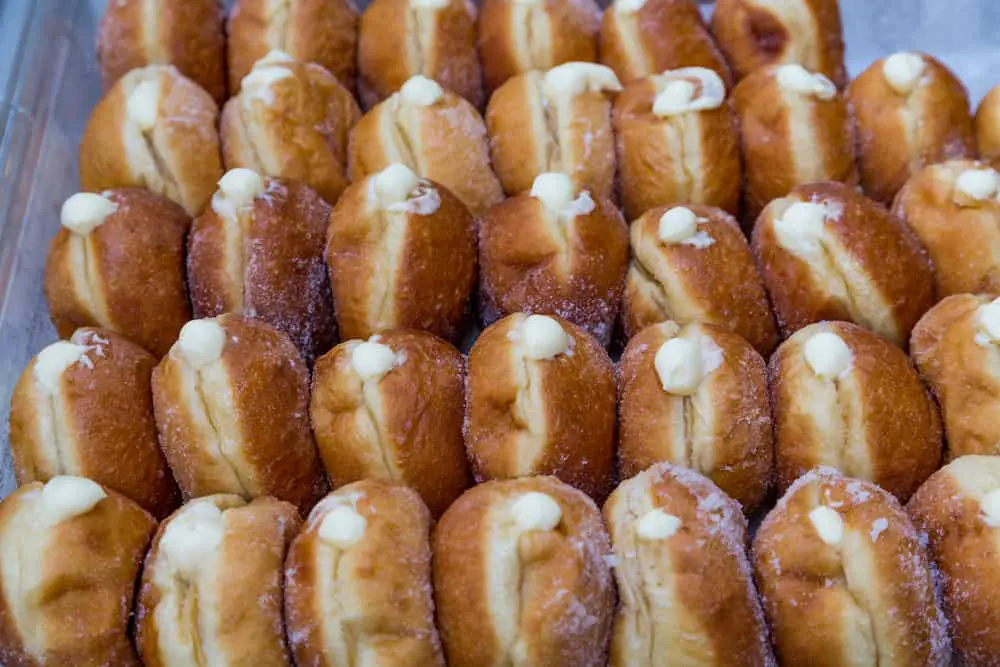If you’re looking for sumptuous simplicity, you can’t get much better than the cream filled doughnut. Combining an all-American classic with the decadence of traditional French pastry cuisine, the white cream doughnut has evolved from a naughty novelty into an established titan of the genre.
Today, we’ll be taking a closer look at this versatile, international star of the doughnut scene. Crucially, we’ll be looking at how to make cream doughnuts from the comfort of your own kitchen. We’ll also glance at the history of this well-loved treat and how it’s come to occupy the position it holds today on the American and global stage.
Get your napkins ready – it’s about to get creamy!
A Brief History of the White Cream Doughnut
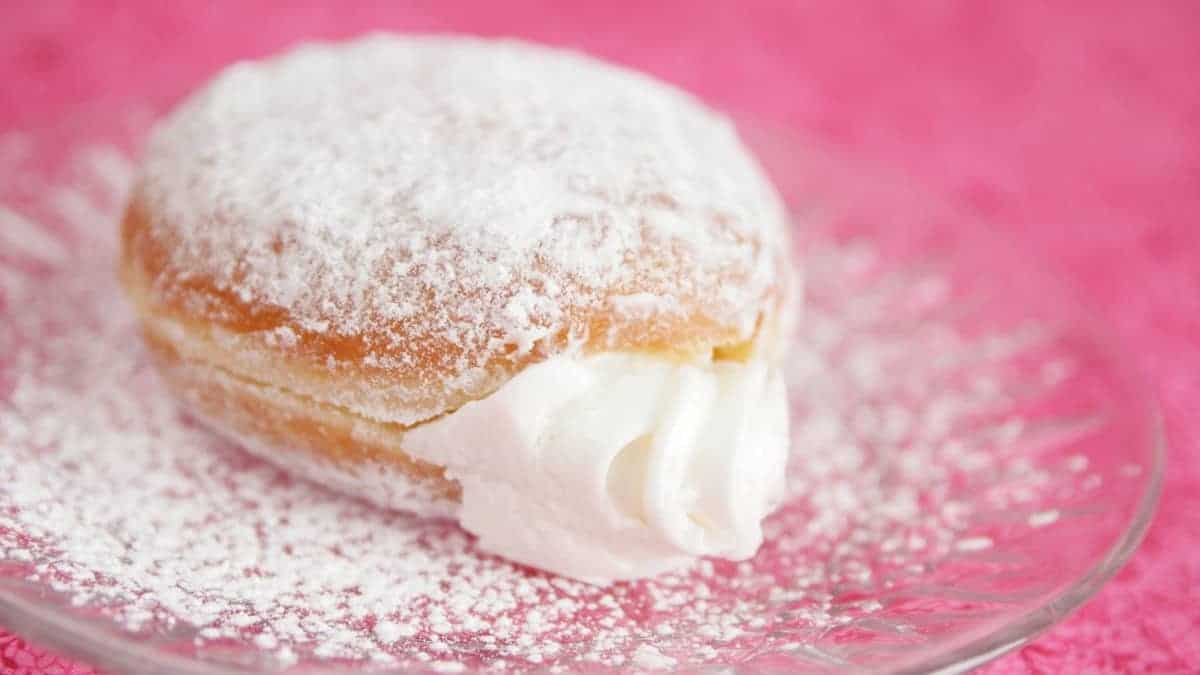
The precise origin of this heavyweight dessert is difficult to pin with any certainty. Doughnuts in various forms have been around for centuries, if not millenia! Accounts of deep fried dough and sweetened breads crop up in ancient texts and in ancient archaeological sites across the world.
However, the doughnut that we’ve come to know and love in the West seems to have had its origins in Dutch settlers coming to America in the 1700s. The dutch ‘olykoek’, or ‘oily cake’, seems to have been a precursor to the more recognisable doughnut of today.
By the 19th century, doughnut-like desserts had started to appear in English cookbooks and were labelled as identifiably American foods. It wasn’t until the 20th century, post-war era that they became so successful on the international stage.
But when did the white cream doughnut itself begin to emerge? Who first came up with the bright idea of filling the delicious, fluffy dough with sumptuous cream?
No one seems to be able to lay a strong claim to this particular feat, but the style of cream itself likely has its origins in classic French cooking of the mid 19th century. It was during this time that French pastry chefs and culinary masters started perfecting the art of decadent, thick, cream-based desserts. This period also saw the fruit fillings of various traditional pastries start to be replaced with cream.
Nowadays, cream filled doughnuts have become so popular that there’s even a National Cream Filled Donut Day in the US! If you want to celebrate it yourself, it’s September 14th.
Whether you’re taking part in a national celebration, or you just want to have a go at recreating the magic at home for your friends and family, let’s take a look at how we can make it for ourselves.
Ingredients
The great thing about white cream doughnuts is that you don’t need hard-to-find ingredients in order to make them. You do, however, need patience! The recipe we’re about to follow isn’t something that can be turned out in a few minutes, but trust us, it will be worth your while.
This recipe makes between 18 and 24 doughnuts, depending on their size. That might sound like a lot, but we think it’s worth making a decent batch if you’re going to the effort! These are going to be a sure-fire hit with friends and family. If anything, you’ll regret you didn’t make more!
Here’s what you’ll need:
For the dough
80g sugar – Caster sugar is best, but if you don’t have this to hand you can use granulated sugar. You can also use a blender to grind granulated sugar down into a finer substance, which will work better for this recipe!
20g fresh yeast – or 9g instant dry yeast, depending on what’s available. If you’re using active dry yeast, make sure you activate it first by combining it with water and a teaspoon of sugar. Leave it until the top becomes frothy, then proceed as per the recipe.
½ teaspoon vanilla extract
Zest of one lemon
3 medium eggs
600g all purpose flour
¼ teaspoon of ground nutmeg
8g sea salt
150g unsalted butter – cubed, and at room temperature
200g caster sugar – this is for coating the doughnuts during the final stage!
2 teaspoons ground cinnamon – also for coating
1 tbsp dark rum – This isn’t a necessity, but it can help the doughnuts from soaking up too much oil and can also add flavour!
Cream filling
500g whole milk
4 large egg yolks
1 large egg
45g corn starch
150g granulated sugar
½ teaspoon fine sea salt
1 teaspoon vanilla extract
30g unsalted butter
200g heavy cream – this needs to be fridge temperature!
1.5 litres of sunflower or canola oil – for frying. You want to make sure you’re using a relatively flavour-neutral oil with a high smoke point.
Step-by-step instructions
As with many doughnut recipes, using a stand-mixer is often the easiest way of mixing the ingredients. However, if you don’t have one of these, going the old school way and using your hands to mix is fine!
Ladies and gentlemen, tie your aprons tight, here we go.
Making the dough
Step 1
In a mixing bowl, place the water, sugar, yeast, rum, lemon zest, vanilla and eggs. Give them a quick whisk with a fork.
Step 2
Add your flour, salt, and nutmeg for flavour – keep kneading or mixing until the dough becomes smooth and elastic. This could be 5 – 8 minutes, or a touch longer.
Step 3
Once it starts comfortably coming away from the side of the bowl you can start adding your butter, one cube at a time. Keep mixing and be patient! It will initially look as if the butter isn’t blending properly, but it will eventually incorporate.
Step 4
Keep kneading for an additional 5 – 10 minutes after the last of the butter has been added. You want the dough to become smooth and elastic again.
Step 5
Take the dough out and fold on a clean surface. Then place it in a slightly greased bowl, cover with plastic film, and put it in the fridge to cool overnight. It will need roughly 12 – 18 hours and should double in size. Don’t leave it for longer than this though, or the texture will be affected!
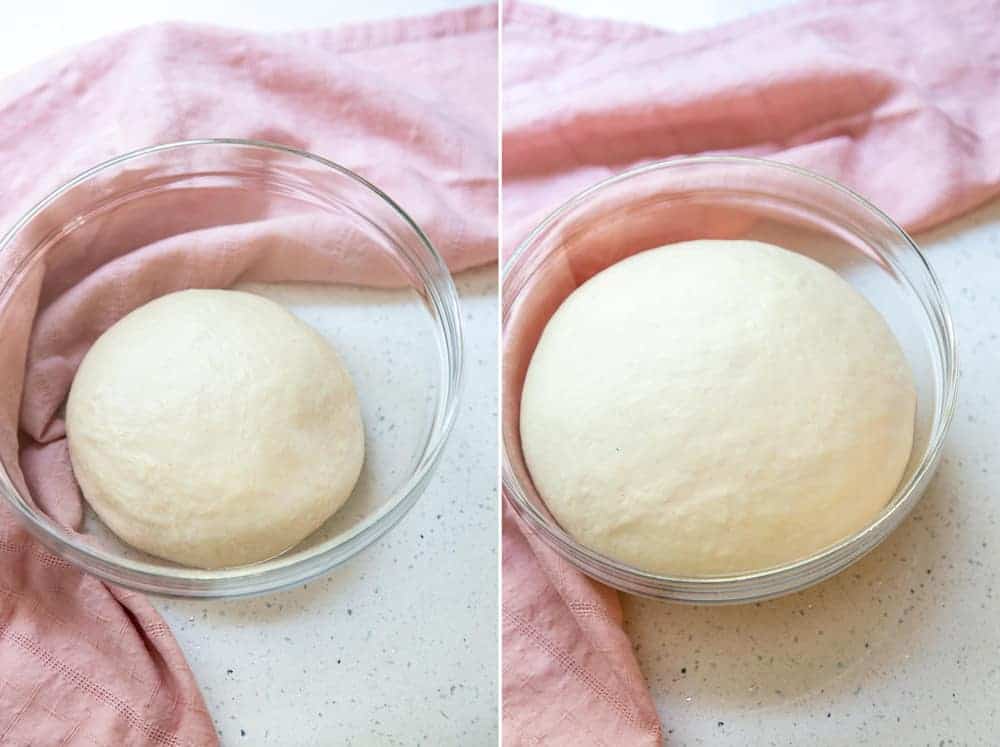
Making the cream
Step 1
Whisk the egg yolks, egg, sugar, corn starch, and salt together in a bowl
Step 2
In a saucepan, heat the milk until it’s almost at a boil, then turn off the heat.
Step 3
Whilst whisking the egg mix, slowly add around ⅔ of the hot milk to the mix
Step 4
Then pour the egg mixture back into the saucepan with the remaining ⅓ of heated milk and continue whisking over a low heat. This should thicken the mixture. Cook it gently for another few minutes to reduce the corn-starchy flavour.
Step 5
Turn off the heat and add in your butter and vanilla, whisking until everything is smoothly blended.
Step 6
Pour the cream into a shallow vessel and cover it with a plastic wrap so that the wrap itself touches the surface. This might not sound ideal but it stops the cream from forming a skin! If you really want the mixture to be as smooth as possible you can pass it through a sieve to remove any residual lumps.
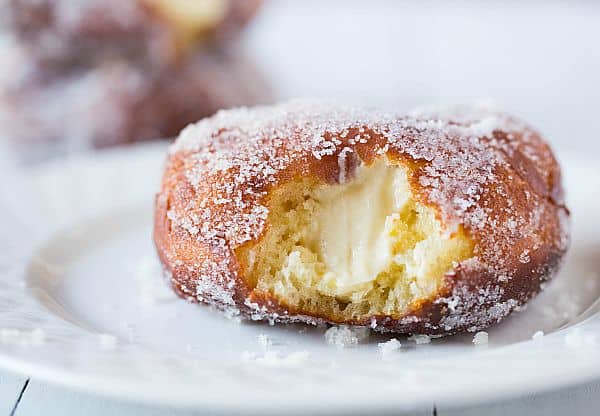
Finishing the dough and filling your doughnuts
Step 1
Take your dough out once it’s spent a night in the fridge, transfer to a lightly floured surface, and give it a punch to deflate.
Step 2
Give it a brief knead and then form it into small doughnut balls (between 18 and 24, depending on what size you want)
Step 3
Place each dough ball on lightly greased squares of baking paper (or a single sheet which you can then cut out) – allow this to proof at room temperature for an additional 3 hours – we told you patience was needed!
Step 4
Deep fry each doughnut in the oil for a couple of minutes on each side, before placing on a wire rack to cool.
Step 5
You can then roll them in caster sugar and cinnamon, if you want extra sweetness and flavour
Step 6
When they’re cool enough to handle, use a cocktail stick or skewer to pierce a hole in the centre and lightly wriggle it around to form a space for the cream
Step 7
Take your refrigerated pastry cream, put it into a mixing bowl and give it a blast with a hand mixer, as it is likely to have become a bit thick whilst in the fridge
Step 8
In a separate bowl, whisk heavy cream before adding this to the pastry cream and mixing together. Use a piping bag to put into the centre of the doughnuts.
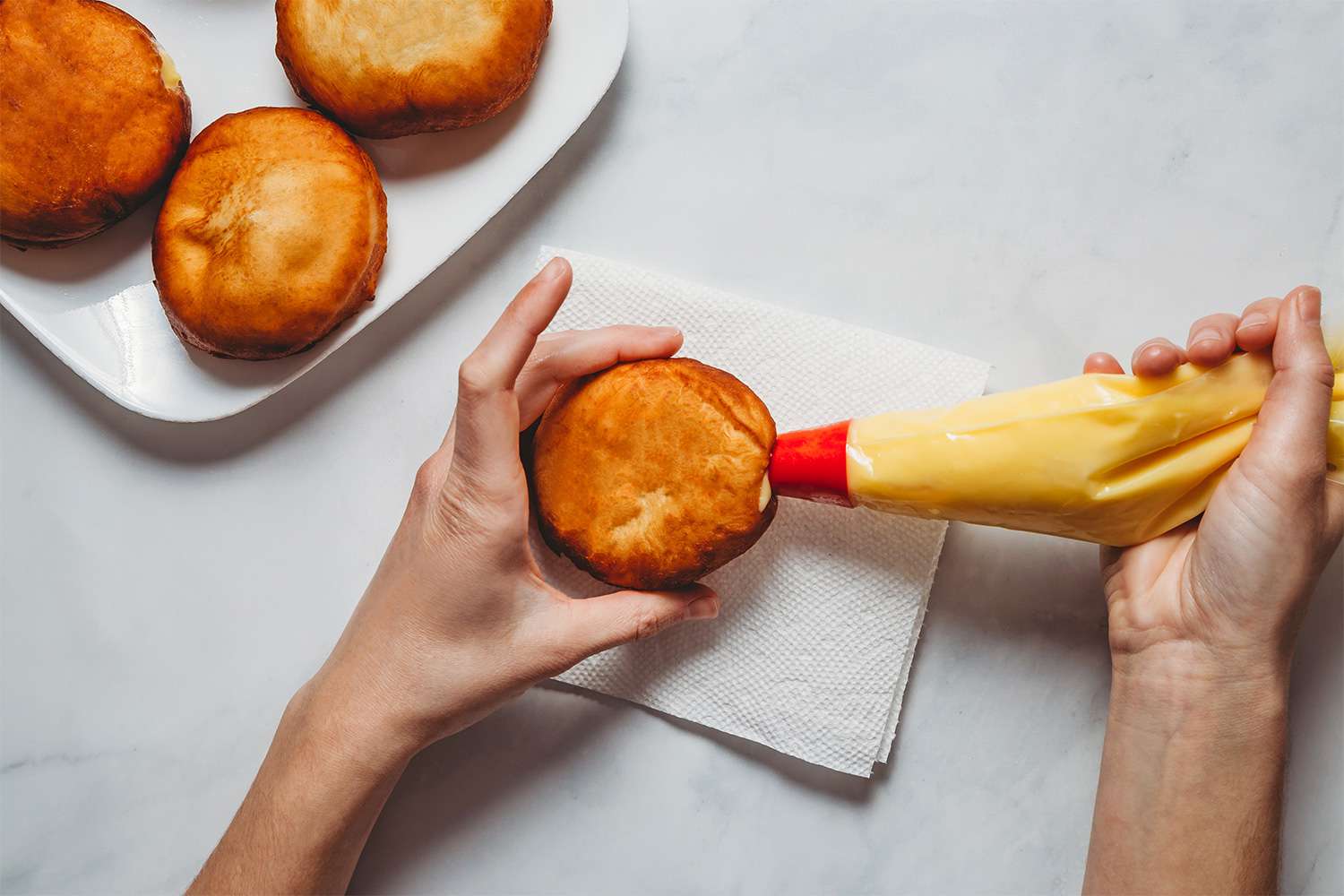
Tuck in and enjoy!
Nutritional Facts
estimates per serving based on 24 doughnuts –
Calories: 382
Carbohydrates: 54g
Sugar: 25g
Sodium: 274mg
Fat: 16g
Trans Fat: 1g
Saturated Fat: 9g
Protein: 7g
Calcium: 60mg
Vitamin C: 1mg
Vitamin A: 573IU
Cholesterol: 122mg
Potassium: 111mg
Iron: 2mg
FAQs
Where can I get cream filled donuts?
You can get these classic American treats all over the USA and abroad! From Boston Kremes to doughnuts filled with Bavarian Cream, you’ll find white cream filled doughnuts all over the West. Why not check out local donut stores near you to see whether they do the doughnut you’re looking for?
Does Dunkin Donuts do cream filled donuts?
You bet they do – in fact, their menu boasts at least 3 white cream filled donuts at any one time, including Bavarian Kreme, Boston Kreme, and more!
What’s the difference between Boston cream and Bavarian cream?
Although the two terms can sometimes be used interchangeably, traditionally speaking Bavarian cream is a thicker, heavier cream that can be served as a stand-alone dessert. It has its roots in classic French dessert cooking. Boston cream tends to use cornstarch to give it a silky, smooth texture and is more commonly used for doughnut and pastry fillings, rather than a self-standing dessert.
Conclusion
If that hasn’t got the taste-buds ringing, we dare you to go and try one for yourself! The true strength of a white cream filled doughnut is in its simplicity. Don’t let that fool you though – simplicity doesn’t mean a lack of sophistication. These airy delights are about as sophisticated as you can get.
Grab one today, or follow the recipe we’ve shared here to impress your friends and family! Bon appetit.
